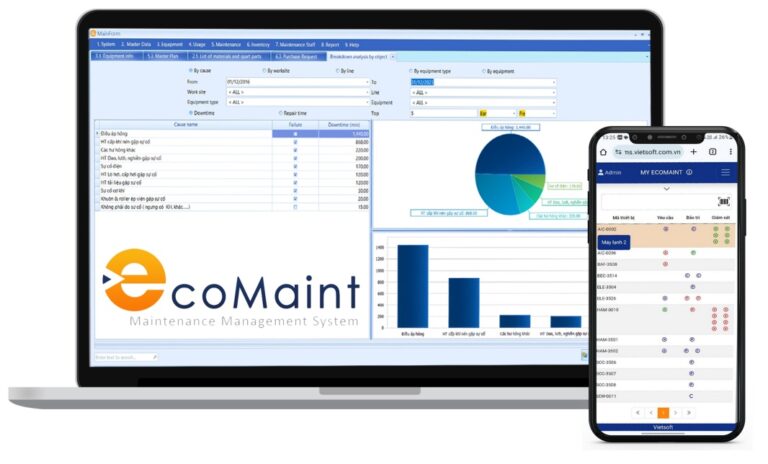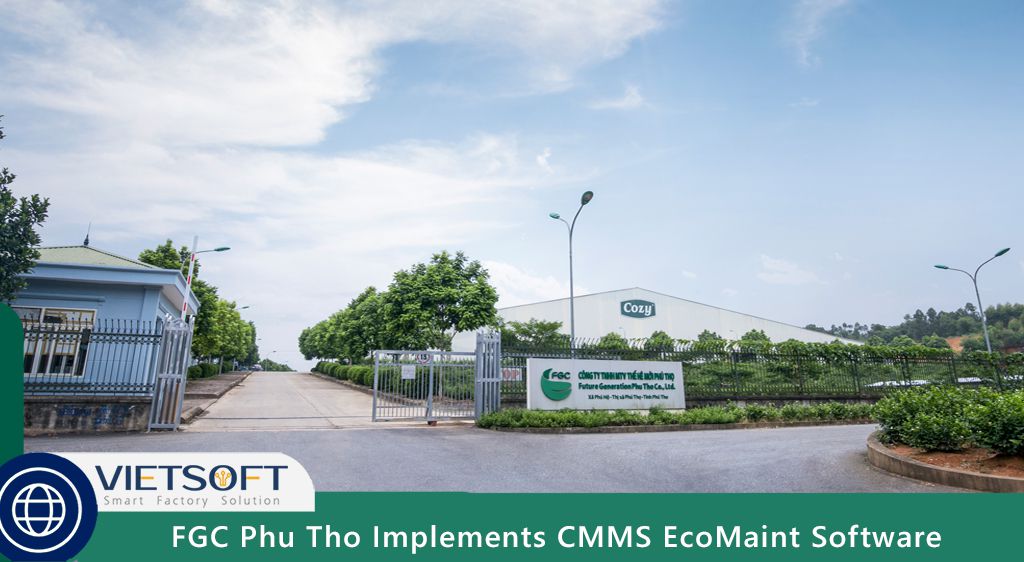
In the fast-evolving world of industrial maintenance, Standard Operating Procedures (SOPs) in Maintenance serve as the backbone for ensuring operational efficiency, safety, and reliability. These documented guidelines provide clear, step-by-step instructions for performing maintenance tasks, ensuring consistency across teams and minimizing risks. This article dives deep into the role, benefits, and implementation of SOPs in maintenance, tailored for the Vietnamese market.
I. What Are Standard Operating Procedures in Maintenance?
Standard Operating Procedures (SOPs) in Maintenance are detailed, written instructions that outline the specific steps, tools, safety protocols, and quality standards required to perform maintenance tasks. These procedures ensure that tasks—whether routine inspections, preventive maintenance, or emergency repairs—are executed consistently, safely, and efficiently. SOPs act as a roadmap for maintenance teams, reducing errors, enhancing equipment reliability, and supporting compliance with industry regulations.
SOPs in maintenance cover a wide range of activities, including:
- Preventive Maintenance: Scheduled tasks like equipment lubrication, calibration, and inspections to prevent unexpected failures.
- Corrective Maintenance: Steps for diagnosing and repairing equipment breakdowns.
- Safety Protocols: Guidelines for using personal protective equipment (PPE), lockout/tagout (LOTO) procedures, and handling hazardous materials.
- Quality Assurance: Processes to ensure maintenance tasks meet organizational and regulatory standards.
By standardizing these processes, SOPs eliminate ambiguity, streamline workflows, and provide a foundation for training new technicians. For example, a well-crafted SOP for a conveyor belt inspection might include steps for checking alignment, tension, and lubrication, along with safety precautions to avoid pinch points.
II. Why Are SOPs Critical in Maintenance Management?
The importance of SOPs in Maintenance cannot be overstated, especially in industries like manufacturing, energy, and logistics, where equipment downtime can lead to significant financial losses. According to industry studies, facilities with well-implemented SOPs can reduce downtime by 15-25% and improve productivity by a similar margin. Below are the key reasons why SOPs are indispensable:
1. Ensuring Consistency and Quality
SOPs standardize maintenance tasks across teams, shifts, and locations. This uniformity reduces variability in performance, ensuring that every technician follows the same steps, whether they’re servicing a motor or calibrating a sensor. Consistent execution leads to predictable outcomes and higher-quality maintenance.
2. Enhancing Operational Efficiency
By providing clear instructions, SOPs eliminate guesswork, enabling technicians to complete tasks faster and with fewer errors. For instance, a predefined SOP for replacing a pump seal can reduce repair time by ensuring technicians have the right tools and steps at hand.
3. Prioritizing Safety
Maintenance tasks often involve hazardous equipment or environments. SOPs outline safety protocols, such as wearing PPE or following LOTO procedures, to protect workers and prevent accidents. A well-documented SOP can reduce workplace injuries by ensuring compliance with safety standards.
4. Supporting Compliance
Industries like pharmaceuticals and food processing are subject to strict regulatory requirements. SOPs ensure that maintenance activities align with standards set by organizations like ISO or local Vietnamese regulations, reducing the risk of penalties.
5. Facilitating Training and Onboarding
For new technicians, SOPs serve as a training tool, providing a clear reference for learning complex processes. This accelerates onboarding and ensures that new hires adhere to best practices from day one.
III. Key Maintenance Processes That Benefit from SOPs
Not all maintenance tasks require SOPs, but certain processes benefit significantly from standardized guidelines. Below are six critical areas where SOPs in Maintenance make a substantial impact:
1. Preventive Maintenance
Preventive maintenance involves regular inspections and servicing to prevent equipment failures. SOPs ensure that tasks like lubrication, filter replacement, or belt tension checks are performed consistently. For example, an SOP for a chiller system might include checking coolant levels, inspecting hoses, and recording performance metrics.
2. Predictive Maintenance
Predictive maintenance uses data from sensors and IoT devices to anticipate equipment failures. SOPs guide technicians on interpreting data, scheduling maintenance, and performing targeted repairs. This approach can save 8-12% over preventive maintenance by addressing issues before they escalate.
3. Corrective Maintenance
When equipment fails, SOPs provide a structured approach to diagnosing and repairing issues. For instance, an SOP for a hydraulic system breakdown might include steps for isolating the fault, replacing faulty components, and testing the system post-repair.
4. Safety and Compliance Procedures
SOPs for safety ensure that technicians follow protocols for handling hazardous materials, using PPE, or performing LOTO. These guidelines are critical in high-risk industries like oil and gas, where non-compliance can lead to severe consequences.
5. Equipment Calibration
Calibration SOPs ensure that instruments and machinery operate within specified tolerances. For example, an SOP for calibrating a pressure gauge might include steps for comparing readings against a standard and adjusting as needed.
6. Inventory Management
SOPs for maintenance, repair, and operations (MRO) inventory ensure that spare parts are ordered, stored, and issued efficiently. This prevents stockouts or overstocking, optimizing resource use.
IV. Components of an Effective Maintenance SOP
A well-crafted SOP is clear, concise, and comprehensive. Below are the essential elements to include:
- Objective: Clearly state the purpose of the SOP, e.g., “To outline the procedure for inspecting a centrifugal pump.”
- Scope: Define the equipment, systems, or tasks covered by the SOP.
- Responsibilities: Specify who is responsible for each task, such as technicians, supervisors, or engineers.
- Resources: List required tools, parts, and PPE, e.g., “Torque wrench, safety gloves, and manufacturer’s manual.”
- Step-by-Step Instructions: Provide a detailed, numbered list of actions, starting with verbs like “Inspect,” “Lubricate,” or “Test.”
- Safety Guidelines: Include precautions like “Ensure the machine is powered off before starting.”
- Troubleshooting Tips: Offer guidance for common issues, e.g., “If the motor overheats, check for blocked vents.”
- Documentation: Specify how to record the task, such as updating a work order in a CMMS.
Visual aids like flowcharts or diagrams can enhance clarity, especially for complex tasks. For example, a diagram showing the components of a gearbox can help technicians identify parts during maintenance.
V. Types of Maintenance SOPs
The structure and format of SOPs in Maintenance vary depending on the complexity, scope, and purpose of the task. Selecting the appropriate SOP type ensures that instructions are clear, actionable, and suited to the task’s requirements. Below, we explore four primary types of maintenance SOPs, each designed to address specific maintenance scenarios, with detailed explanations and examples to illustrate their application.
1. Step-by-Step SOP
Step-by-Step SOPs are ideal for straightforward, linear tasks that require a clear sequence of actions with minimal decision-making. These SOPs are written as a numbered list, guiding technicians through each step in order, ensuring consistency and reducing the risk of errors. They are particularly effective for routine or repetitive maintenance tasks where precision and adherence to a fixed process are critical.
Key Features:
- Simple, sequential instructions starting with action verbs (e.g., “Check,” “Replace,” “Test”).
- Minimal branching or conditional steps, making them easy to follow.
- Often accompanied by checklists or annotated visuals for clarity.
When to Use:
- Routine inspections, such as checking fluid levels in a compressor.
- Simple repairs, like replacing a worn conveyor belt.
- Standardized tasks, such as lubricating bearings or cleaning filters.
2. Hierarchical SOP
Hierarchical SOPs are designed for complex maintenance tasks that involve multiple systems, subprocesses, or decision points. These SOPs organize instructions into main steps with nested sub-steps, providing a structured framework for tasks that require coordination across different components or teams. They are particularly useful for facility-wide maintenance or tasks involving intricate equipment.
Key Features:
- Organized into main steps with detailed sub-steps, often using bullet points or indented lists.
- Includes conditional instructions (e.g., “If X occurs, proceed to step Y”).
- May incorporate flowcharts or decision trees to guide technicians through complex scenarios.
When to Use:
- Facility-wide inspections covering HVAC, electrical, and plumbing systems.
- Complex repairs, such as overhauling a multi-component machine like a CNC lathe.
- Tasks requiring coordination between multiple teams, such as a plant shutdown.
3. Hybrid SOP
Hybrid SOPs combine elements of step-by-step and hierarchical SOPs, incorporating linear instructions with additional media, checklists, or alternative actions. These SOPs are versatile, catering to tasks that require both straightforward steps and flexibility to handle variations or unexpected issues. They often include visual aids, such as photos or videos, to enhance clarity.
Key Features:
- Blends sequential steps with conditional or alternative actions.
- Incorporates multimedia (e.g., diagrams, videos, or QR codes linking to tutorials).
- Includes checklists to ensure all steps are completed.
When to Use:
- Troubleshooting tasks, such as diagnosing a variable frequency drive (VFD) failure.
- Maintenance tasks with multiple outcomes, like servicing a pump with different failure modes.
- Training scenarios where visual aids enhance understanding.
4. Checklist-Based SOP
Checklist-Based SOPs focus on ensuring that all critical steps are completed, often used for repetitive or high-risk tasks where missing a step could lead to significant consequences. These SOPs present tasks as a simple checklist, allowing technicians to mark off completed actions, ensuring thoroughness and accountability.
Key Features:
- Presented as a concise list of tasks or checks.
- Often used in conjunction with other SOP types for verification.
- Can be integrated into digital platforms like CMMS EcoMaint for real-time tracking.
When to Use:
- Safety inspections, such as verifying LOTO procedures before maintenance.
- Routine preventive maintenance, like daily equipment checks.
- Compliance audits, such as ensuring adherence to ISO 9001 standards.
VI. Choosing the Right SOP Type
Selecting the appropriate SOP type depends on the task’s complexity, the technician’s expertise, and the operational context. For example, a step-by-step SOP suits routine tasks like lubrication, while a hierarchical SOP is better for overhauling a multi-component system. Hybrid SOPs are ideal for troubleshooting, and checklist-based SOPs excel in safety and compliance checks. Integrating these SOPs into a CMMS like EcoMaint allows for easy access, version control, and real-time tracking, ensuring technicians use the most relevant format for each task.
VII. How to Create Effective SOPs for Maintenance
Creating SOPs in Maintenance requires careful planning and collaboration. Below is a step-by-step guide:
1. Identify Critical Tasks
Prioritize tasks based on equipment criticality, safety risks, and regulatory requirements. Conduct a Failure Modes, Effects, and Criticality Analysis (FMECA) to identify high-risk assets and recurring issues.
2. Gather Input from Stakeholders
Involve maintenance technicians, supervisors, and safety officers in the development process. Their firsthand experience ensures that SOPs are practical and address real-world challenges.
3. Draft Clear and Concise Procedures
Use simple language, avoid jargon, and break tasks into numbered steps. For example, instead of “Ensure optimal functionality,” write “Check motor temperature does not exceed 80°C.”
4. Incorporate Visuals
Add diagrams, photos, or flowcharts to clarify complex steps. For instance, a photo of a correctly installed gasket can prevent errors during assembly.
5. Test and Revise
Pilot the SOP with a small team, gather feedback, and refine as needed. Ensure the SOP is easy to follow and addresses all potential scenarios.
6. Ensure Accessibility
Store SOPs in a centralized system like CMMS EcoMaint, where technicians can access them via mobile devices or workstations.
VIII. mplementing SOPs with CMMS EcoMaint
Integrating SOPs in Maintenance with a Computerized Maintenance Management System (CMMS) like EcoMaint from Vietsoft transforms how organizations manage maintenance. EcoMaint streamlines SOP implementation by:
- Centralized Storage: Store all SOPs in a digital repository, accessible to technicians anytime, anywhere.
- Task Integration: Link SOPs to specific work orders or equipment records, ensuring technicians follow the correct procedures.
- Version Control: Automatically update SOPs and notify users of changes, preventing the use of outdated guidelines.
- Performance Tracking: Monitor adherence to SOPs through key performance indicators (KPIs) like mean time to repair (MTTR) and overall equipment effectiveness (OEE).
- Training Support: Provide interactive training modules within EcoMaint to familiarize technicians with SOPs.
By leveraging EcoMaint, organizations can reduce downtime, improve compliance, and enhance technician productivity. Curious about how EcoMaint can optimize your maintenance processes? Explore the CMMS EcoMaint solution here.
Contact us for consultation via hotline: 0986778578 or email: sales@vietsoft.com.vn.
IX. Benefits of Implementing SOPs in Maintenance
Implementing SOPs in Maintenance delivers measurable benefits, including:
- Reduced Downtime: Standardized procedures minimize repair times, with studies showing up to 18% savings compared to reactive maintenance.
- Improved Safety: Clear safety protocols reduce workplace accidents, protecting technicians and equipment.
- Cost Savings: Preventive maintenance SOPs extend asset life and reduce unexpected repair costs.
- Enhanced Compliance: SOPs ensure adherence to regulations, avoiding costly fines.
- Streamlined Training: SOPs accelerate onboarding, reducing training costs by up to 20%.
X. Common Mistakes to Avoid
To maximize the effectiveness of SOPs, avoid these pitfalls:
- Unclear Instructions: Use precise language to prevent misinterpretation. For example, specify “Tighten bolts to 50 Nm” instead of “Tighten bolts securely.”
- Inadequate Training: Provide hands-on training to ensure technicians understand SOPs.
- Outdated Procedures: Regularly review and update SOPs to reflect new technologies or regulations.
XI. Continuous Improvement Strategies
To keep SOPs relevant, adopt these strategies:
- Feedback Loops: Conduct regular feedback sessions with technicians to identify SOP improvements.
- KPI Monitoring: Track metrics like MTBF and OEE to assess SOP effectiveness.
- Ongoing Training: Offer workshops to keep technicians updated on SOP changes.
- Lean Principles: Apply lean techniques to eliminate redundant steps in SOPs.
XII. Example: SOP for Machinery Breakdown
Below is a sample SOP for handling a machinery breakdown, written in a clear, actionable format:
Objective: To outline the procedure for repairing a machinery breakdown.
Scope: Applies to all production machinery in the facility.
Responsibility: Maintenance technicians and supervisors.
Accountability: Head of Maintenance.
Procedure:
1. Report the breakdown to the maintenance department with details of the issue.
2. Supervisor authorizes a technician to address the breakdown.
3. Power off the machine and display an “Under Maintenance” sign.
4. Consult the operator to understand the breakdown’s cause.
5. Inspect the machine to identify faulty components.
6. Dismantle and label affected parts, storing them in a tray.
7. Clean and repair or replace parts as needed.
8. Reassemble the machine and lubricate per manufacturer guidelines.
9. Conduct a trial run to confirm repairs.
10. Remove the “Under Maintenance” sign and update the CMMS with repair details.
XIII. Conclusion
Standard Operating Procedures in Maintenance are essential for driving efficiency, safety, and reliability in industrial operations. By standardizing tasks, SOPs reduce errors, enhance compliance, and streamline training. When integrated with a robust CMMS like EcoMaint from Vietsoft, SOPs become even more powerful, offering centralized access, automated workflows, and real-time performance tracking. For maintenance managers and technicians in Vietnam, adopting SOPs supported by EcoMaint can transform operations, reduce costs, and ensure long-term success. To learn more about how EcoMaint can elevate your maintenance strategy, visit Vietsoft’s EcoMaint page and discover a world of possibilities.




